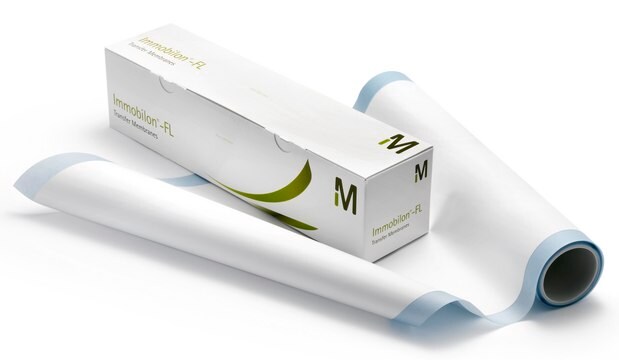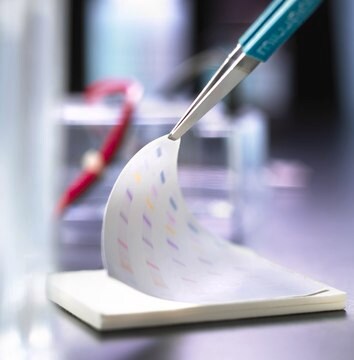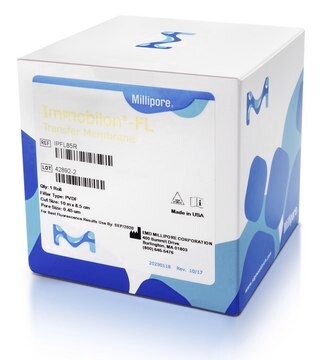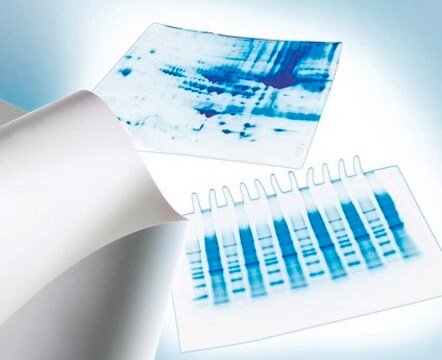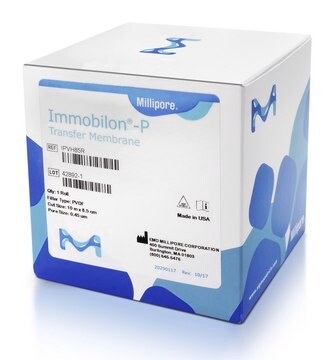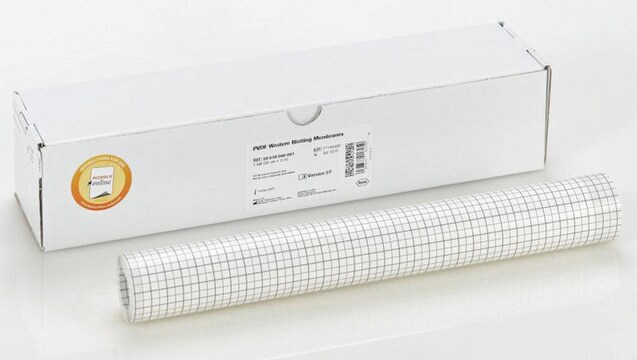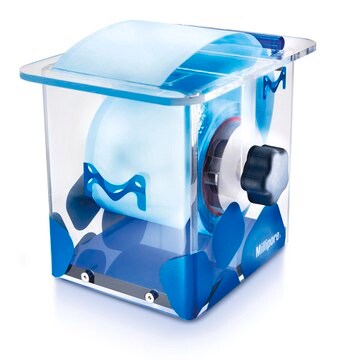IPFL10100
Immobilon® -FL PVDF Membrane
10 sheets, 10 cm x 10 cm, 0.45 µm pore size, transfer membrane with low background fluorescence
Synonym(e):
Western blotting membrane, blotting membrane, transfer membrane
About This Item
Empfohlene Produkte
Produktbezeichnung
Immobilon®-FL PVDF Membrane, 10 sheets, 10 cm x 10 cm, 0.45 µm pore size, Hydrophobic PVDF Transfer Membrane with low background fluorescence for Western blotting. Compatible with visible and infrared fluorescent probes.
Materialien
PVDF membrane
plain filter
white filter
Qualitätsniveau
Leistungsmerkmale
hydrophobic
Hersteller/Markenname
Immobilon®
Methode(n)
dot blot: suitable
western blot: suitable
Filter L × B
10 cm × 10 cm
Porengröße
0.45 μm pore size
Kapazität
155 μg/cm2 adsorption capacity (insulin)
205 μg/cm2 adsorption capacity (BSA)
300 μg/cm2 adsorption capacity (goat IgG)
Kompatibilität
for use with Amido black
for use with CPTS
for use with Coomassie brilliant blue
for use with Ponceau-S red
Nachweisverfahren
chemiluminescent
colorimetric
fluorometric
Versandbedingung
ambient
Verwandte Kategorien
Allgemeine Beschreibung
Anwendung
Leistungsmerkmale und Vorteile
- The first transfer membrane designed for fluorescence applications Extremely low background improves the sensitivity of all fluorescence detection protocols
- Compatible with all commonly used fluorescent probes at all excitation and emission wavelengths
- compatible with standard blocking agents and buffers
- Ideal for multiplexing and chemifluorescence detections
Rechtliche Hinweise
Lagerklassenschlüssel
11 - Combustible Solids
WGK
WGK 3
Flammpunkt (°F)
Not applicable
Flammpunkt (°C)
Not applicable
Analysenzertifikate (COA)
Suchen Sie nach Analysenzertifikate (COA), indem Sie die Lot-/Chargennummer des Produkts eingeben. Lot- und Chargennummern sind auf dem Produktetikett hinter den Wörtern ‘Lot’ oder ‘Batch’ (Lot oder Charge) zu finden.
Besitzen Sie dieses Produkt bereits?
In der Dokumentenbibliothek finden Sie die Dokumentation zu den Produkten, die Sie kürzlich erworben haben.
Kunden haben sich ebenfalls angesehen
Unser Team von Wissenschaftlern verfügt über Erfahrung in allen Forschungsbereichen einschließlich Life Science, Materialwissenschaften, chemischer Synthese, Chromatographie, Analytik und vielen mehr..
Setzen Sie sich mit dem technischen Dienst in Verbindung.